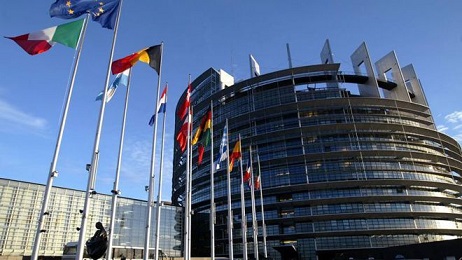Eurozone businesses soared in March and hit the 46 month high record. This ramp up took place just when the European Central Bank started printing currencies to stimulate growth and inflation. At the same time, China is witnessing a slowdown in its factories and thus calling for more encouragement in order to regain back the momentum.
Moreover, the rise in Eurozone business activities have pumped up hopes of growth across the region. The Eurozone Purchasing Manager's Index (PMI) (according to Markit Data) surged up from 53.3 in February to 54.1 in March so far, thereby indicating the fastest growth in past four years. Both the new businesses as well as the growth of business activities were at its highest level since March 2011. Germany, the biggest Eurozone economy is experiencing an acceleration in its business activities that reached its record highs in past 8 months. And its composite PMI substantially increased from 53.8 in February to 55.3 in March, mainly driven by new orders growth. Meanwhile, the businesses expanded in France for the second consecutive month though the growth rate was higher in February as compared to march. Most encouraging are the signals of renewed growth in France where the plunge in manufacturing activities are offset by substantial expansion of service sector. The outlook for almost all the Eurozone countries has brightened. It is a clear indication that European Central bank’s successful implementation of new quantitative easing program of €1 trillion is propelling the real economy.
Despite of implementing monetary easing through two interest rate cuts since November 2014, the depressing Chinese survey signals that the world’s second largest economy is losing momentum. Essentially, the survey revealed that deflationary pressures lessened in March due to slowdown in price drop.
Employment rates have also climbed steeply since August 2011. Although the growth of job creation in the service sector remained stagnant at February levels, the manufacturing sector witnessed the steepest growth in jobs since April 2014. According to chief economists, the Eurozone GDP has rose by 0.3% in the first quarter of 2015. Moreover, the consumer confidence climbed to eighth year highs in March, denoting the steepest monthly gain in consumer confidence since April 2009.
The Eurozone economy is spurred by many vital factors including record low oil prices, weaker Euro currency, further decreased fiscal headwinds and European Central Bank’s steps to provide stimulus to the economy. All these are strong indicators signalling towards an upturn in the economy with significant staff additions by companies which in turn will increase overall consumer spending.
Moreover, ECB’s quantitative easing program has begun at the time when the Eurozone’s economic upturn has already gained momentum. This foretells that the business is expected to expand significantly as the year progresses, stimulating business investments and increased employments thereby ensuring sustainable recovery for the entire region. Moreover, decreasing concerns over Greek exit from Eurozone will further add to the positive outlook for the region. However, the persisting concern about Greece and Russia can drag down the ongoing recovery of Eurozone.





